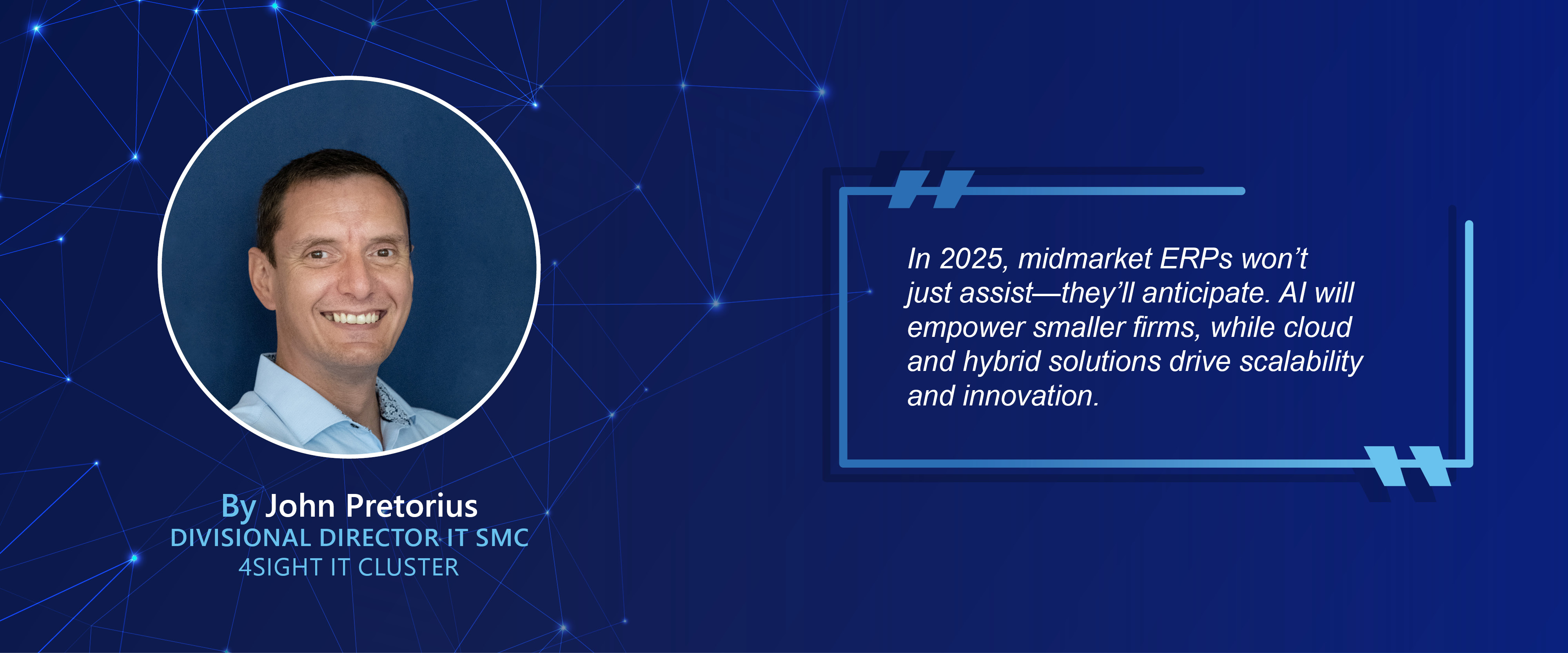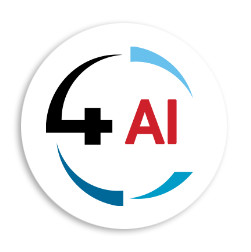Blog
Trends of Midmarket ERPs in 2025: An Expert Opinion

1. AI and Automation (Automated Intelligence)
The ERP landscape for midmarket companies in 2025 will undergo significant transformation, especially with the integration of AI and automation technologies. We're moving towards a phase where ERP systems not only assist but also anticipate business needs. Systems like Microsoft's Copilot in Business Central currently operate on a request-response model, but by 2025, we'll see these systems taking a more proactive role. AI will be leveraged to analyse historical data, market trends, and even external factors like weather or economic reports to predict inventory needs, optimise pricing strategies dynamically, and manage sales to prevent losses.
Your ERP system would, as an example, automatically suggest reordering inventory based on predictive analytics, adjusting prices in real-time according to market demand, or autonomously allocating costs to departments based on employee roles or project tags. This level of automation will not only streamline operations but also empower smaller to mid-sized companies with tools previously accessible only by large enterprises. This democratisation of AI capabilities will level the playing field, allowing midmarket firms to compete more effectively on innovation and responsiveness.
2. Getting Rid of On-Prem Solutions – Only Hybrid and Cloud-Native (Solutions)
The migration from on-premises to cloud or hybrid solutions will be nearly complete this year in the midmarket ERP sector. The advantages of cloud solutions are compelling - reduced hardware costs, scalability, and the ability to innovate rapidly without the overhead of maintaining physical infrastructure. However, recognizing that not all geographies or industries can go fully cloud due to connectivity or regulatory issues, hybrid models will carve out a significant niche.
Companies like 4Sight are strategically positioned with offerings like Business Central and Sage Intacct, which support both cloud and hybrid environments. In areas where internet connectivity remains a challenge, solutions like those from Armada AI, leveraging Starlink for data backup, will ensure businesses can operate with the benefits of cloud technology, even in remote or rural settings. This approach not only mitigates the risk of data loss but also ensures that businesses can scale operations without geographic limitations.
3. Seamless User Experience
The user experience (UX) in ERP systems will be a critical differentiator. The traditional user base of ERPs (finance, procurement) will expand as these systems become tools for all employees. A seamless UX will involve intuitive interfaces, mobile accessibility, and features like voice commands or chatbot interactions for quick data retrieval or decision-making on the go.
The importance of UX goes beyond user satisfaction; it directly impacts adoption rates and operational efficiency. A well-designed interface can reduce training costs and time, allowing new hires or employees from non-technical backgrounds to contribute more quickly. Moreover, an engaging UX can break down the silos between different departments, enabling a more cohesive company culture where information flows freely, and decisions are made based on real-time insights rather than waiting for data to be processed through back-office channels.
4. Third-party Integrations
Integration with third-party tools will become more sophisticated and essential. While integration exists today, the future will see a demand for seamless, real-time data sharing across ecosystems. ERP providers will need to offer robust APIs that expose all necessary endpoints to facilitate this integration. For instance, if a company uses CRM systems, they should be able to integrate this with their ERP without significant friction, ensuring that sales data directly influences inventory and accounting operations. The marketplace for third-party integrations around major ERP platforms like Sage, Microsoft, or Acumatica will expand, offering customers the ability to choose best-of-breed solutions for specific functions rather than being locked into one vendor’s ecosystem. This flexibility will be crucial for midmarket companies looking to tailor their technology stack to their unique business processes without incurring massive costs or disruptions.
5. Sustainability and Compliance
An emerging trend that will gain traction by 2025 is the integration of sustainability metrics within ERP systems. Midmarket companies will increasingly need to track their environmental impact, from carbon footprints to supply chain sustainability. ERPs will include modules for sustainability reporting, helping businesses not only comply with emerging regulations but also appeal to a market that values corporate responsibility.
Furthermore, with global regulations tightening around data protection and privacy (like GDPR, and CCPA), ERPs will need to incorporate advanced compliance features. This includes data encryption, access controls, and audit trails to ensure that businesses can operate securely and legally across borders, which is particularly pertinent for midmarket companies with international operations or ambitions.
Conclusion
The midmarket ERP landscape in 2025 will be characterised by intelligent, accessible, and integrated systems that not only manage but also enhance business operations. The focus will be on leveraging technology to create more agile, efficient, and responsive business models. For midmarket companies, staying ahead will mean adopting these trends, ensuring their ERP systems are not just tools for today but platforms for future growth and innovation.
Contact 4Sight today on This email address is being protected from spambots. You need JavaScript enabled to view it. and let us help you find the right ERP for your environment, today.


